Part 3: ALPINE ADVENTURES EXCEED EXPECTATIONS – STRESA, ITALY and SWISS COMMUNITIES OF LUGANO, BELLIZONA, ASCONA, MARCOTE and GANDRIA
In Part 2: A relaxing boat ride and two cogwheel trains later, we’d risen over 10,000 feet to gape at the Matterhorn.
We took a toe dip into Italy before re-entering Switzerland, where we would be staying in Lugano for a few days. I say a toe dip because we left the mountains briefly for Stresa, Italy, an internationally acclaimed resort town snuggled up to Lake Maggiore, and because similar to a toe dip, we weren’t invested in full immersion.
Before arriving in Stresa, we took a roadside pause on the Simplon Pass, where Napoleon had constructed a road to ease transporting artillery in his ceaseless military endeavor from 1801-1805 to rule the world. Brig merchant Kaspar Jodok von Stockalper first used Simplon Pass in the mid-17th century to transport salt from the Mediterranean on mules.
Just before the border crossing (where we had to have our passports handy just in case border security guards took the unpredictable opportunity to verify we weren’t illegals), we stopped to stretch legs and gaze up at an imposing 30-foot eagle statue dedicated to the 11th Mountain Brigade. While most people hung around the coach, six of us tackled the rutted, rocky paths to the hilly top to peruse the eagle more closely. A plaque on the eagle reads: “Freedom requires eternal vigilance.” Long may that eagle stand sentry.
We travelled along the Gondo Gorge, which separates Valais, Switzerland from the Divedro Valley and Domodossola in northern Italy. The road became immediately bumpy, the landscape less vibrantly green. Houses became more square and multi-story, unadorned by color or design until we arrived in Stresa, where each residence reflects architectural individuality and the immense wealth of its owners.
STRESA, ITALY
In 1798, Napoleon conquered Switzerland and tried to diminish the power of cantons. He imposed a client state, the Helvetian Republic. Napoleon followed that up by conquering Italy in 1806 and declaring himself King of Italy. The Congress of Vienna in 1815 re-established Switzerland as a fully independent state.
The state of Piedmont in Italy is notable for truffles, risotto rice, Cinzano (vermouth), sparkling wines (especially from Asti), and the Turin Shroud, a length of linen bearing the negative image of a man’s face and body, believed to have been Jesus after his crucifixion.
We stopped in Stresa for lunch and then strolled through the picturesque town and lakefront. Our motor coach took us past many mansions bordering the highway. One of the stately mansions we passed is Grand Hotel Des Iles Borromees, an elegant grand dame of style and ornate adornments. Begun as a hotel, Ernest Hemingway wrote a Farewell To Arms while staying there.
LUGANO, SWITZERLAND
Lugano is the third largest Swiss banking city after Zurich and Geneva. Population is about 60,000. Lugano has multiple identities: it’s a water-fronted city where the Milanese come to shop, German bankers vacation, and even though 2/3 of Lake Lugano belongs to Switzerland, most of the residents are Italian-speaking Swiss.
Though we stayed in Lugano, we still took excursions to Bellinzona, Ascona, Morcote, and Gandria.
Where we stayed:
Hotel Lugano Dante couldn’t be any better situated for easy access to Lugano’s restaurants, shopping, and lakefront, but those aren’t the aspects that immediately elicited pleasure from my husband, Russ. Squatting on each bathroom sink was an adorable rubber duck. An accompanying note with the duck said “Take me home.” Russ did not need a reminder. He adores ducks: live, wooden or rubber. A rubber duck already owns the ledge above our bathtub at home and now it would have a brother. Actually, before the trip was over, two more ducks (which we bought) joined the clan: a Mozart-themed duck wearing a red coat and wigged mane of curls and a German lederhosen and Bavarian-feathered-hat clad duck. Adjacent to the hotel is the Ticino funicular that leads to another level of city shopping, restaurants and attractions. The hotel generously provided us with reusable funicular cards, each bearing our individual name stamped upon it. They came in handy on multiple occasions.
All Hotel Lugano Dante rooms have refrigerators containing complimentary soft drinks and various types of water. An assortment of coffee and tea bags were available. Any used supplies were replaced daily. Each morning complimentary packages of crackers and shortbread cookies, along with chocolate, was laid upon the desk. In the good-sized bathroom, toiletry bottles were larger than typical hotel minis. There were two fragrances of shampoo, conditioner and lotion: either a fresh light scent or an intense orange. The room colors favored Tuscan terra cotta, greens and gold. The embossed wall pager and flower couch were gold. Cushy robes and slippers were provided.
I would be remiss if I didn’t comment on Hotel Lugano Dante’s breakfast buffet. With all our travels, I have become a bit jaded on breakfast. At home we pretty much have toast (all sorts of bread), fruit and strong coffee for breakfast, so I’m not looking to overload on a stomach-filling amount of food, but it is fun to try a local favorite dish or a fresh-made bread with which I am not acquainted. This hotel made limiting my selections difficult. There were oranges and carrots that could have been pulled from the garden that morning lying beside juicers. Nearby a bottle of Prosecco fizzed, just in case a morning cocktail was fancied. There were glazed peppery chunks of fruit in a bowl, at least a dozen different breads, and dishes of cooked veggies that changed each day. One day it was broccoli and another it was sauced garbanzo beans. There was a multitude of dessert options, from apple cakes to beignets. In the evening, canapes were lined up on the lounge’s bar. For the price of buying one drink, you could munch away on the canapes, one of which were paprika-coated potato chips. Those are apparently a local favorite as there were many brands lining grocery store shelves.
What we saw:
Russ and I walked all around Lugano. We stopped counting the number of watch shops. I get that Switzerland is pricy. I get people come here from around the world, and that the country is known for its precision time pieces, but just how many people buy watches in the upper mega-thousands of dollars? Literally we were agog. And it isn’t as if every Swiss town or city we’ve been to isn’t loaded in watch stores, but Lugano seems to be saturated.
What we learned:
Föhn (or foehn) winds are dry, warm winds that typically occur in the downwind side of a mountain range. Local beliefs are that föhn winds affect people’s mental moods once they’ve lived in the area at least five years. They might be prone to short tempers and crying jags. One man in our tour group said those effects are similar to what people suffer from the chinooks in Montana or the Santa Ana winds that blow through Los Angeles, CA.
Where and what we ate and drank:
The first night in Lugano our group dined on the rooftop terrace of Ana Capri Restaurant, overlooking the lake. Dining al fresco on a warm night while watching stars begin to emerge brightly is divine. Our meal began with a choice of a cheese popover or a salad over a mini-brie, which turned out to be much too large for one person. Russ and I both chose the pan-fried turkey breast over risotto, covered lightly by a tasty sauce. Dessert was either panna cotta with raspberry sauce or a passion fruit pudding. The panna cotta was better.
One night we stopped at Ristorante Pizzeria Cantinone Lugano for a light dinner. What had become quickly obvious to Russ is that his favorite pizza topping, Italian sausage, is never offered at pizza restaurants on this trip. Instead, you get thin slices of ham, carefully placed on a thin crust. He said it tasted “okay.” I craved a bowl of French onion soup. I was surprised that unlike a swath of cheese and either a puffy dough crust or chunks of broth-soaked bread, this bowl bore no chunks of cheese…just a pale brown broth loaded with diced onion and three thin-sliced pieces of bread with a light dusting of grated parmesan.
BELLIZONA
What we saw:
Bellinzona and Lugano were both cantons established between 1798 and 1803, during the Helvetic Republic, but in 1803, they united to become the canton of Ticino. Bellinzona is the capital. It is a medieval fortified city consisting of three UNESCO-preserved feudal castles: Castelgrande (the largest of the three), Montebello, and Sasso Corbaro. Built by the Dukes of Milan to protect their interests, the three formed a formidable presence, overseeing the land from three positions of strategic power on the mountainsides. Our tour of Castelgrande began with a 20-minute film and a walk through the museum. Unlike most castles Russ and I have visited, this one is so well-maintained that there’s no overriding smell of must and mildew. In the 1960s, excavations revealed how life in Castelgrande had flourished. The influence of Italian culture and architectural designs is still apparent in the masonry. We climbed up the shorter of the two towers, a decidedly dark set of spiral stairs with dangerously little room for someone coming the opposite direction. Even during the daytime, we had to use a smart phone’s light to see. Once up on top, we walked along a rampart to the next tower, but it felt even more closed in, so most of us chose not to venture further.
What we learned:
There are about 20,000 people who live in Bellizona. They speak a dialect of Ticino Italian known as Lombarian, the same as spoken in Milan. When you travel the San Bernardino Pass, the language shifts from Italian to Romansch.
Russian born painter Wassily Kandinsky didn’t pick up a paint brush until he was 30. Although he’d had early success with developing his style of folk art and expressionism, it was in 1911 that he established his influence by organizing an exhibition with Franz Marc and co-founded “Der Blaue Reiter” (The Blue Rider). The small group of nine Expressionist artists included Alexej von Jawlensky, August Macke, Gabriele Münter. and Marianne von Werefkin. The group would often gather at Werefkin’s house in Ascona to paint and where they became the instigators of abstract art. Kandinsky taught at the Bauhaus school starting in 1922 until the Nazis shut it down in 1933.
We heard about the creation of Swiss bank accounts, that secure system still used today by people who’d rather not pay taxes on assets or to hide their wealth. In the beginning, it was the fear of Jews being ousted from Germany in 1933 who sought a system to protect their money.
As we drove from Bellizona to Ascona, we passed by fields ablaze with bright yellow sunflowers. Sunflower oil is a signature local product.
Where and what we ate and drank:
The Grotto America’s history is as rich as the meats they serve are savory. I can’t tell you about the patio view overlooking the mountains, valley and riverbed, or describe the incredible meal the friendly staff presented without providing background of how this restaurant in Locarno came to be. Think of this as an appetizer. Between 1849 and 1918, about 22,000 Ticino residents from this region (Valle Maggia, Terre di Pedemonte, Valle Onsernone and Centovalli), would meet at The Grotto America before sailing across the Atlantic to San Francisco, CA, hoping to make it big in the gold rush. The restaurant was built around mountain caves used to naturally refrigerate meats and cheeses. Today there are layers of seating to the restaurant, all of which involve ascending rocky steps to dining patios or descending trickier ones to the restrooms at the end of a narrow outside path.
The meal was served family style, beginning with platters of cold meats, salad, cheese, and bread. Then came platters of glazed falling-off-the-bone pork spareribs, beef medallions in a red wine sauce, and Ticino sausages. We kept eating and platters kept being refilled. The same happened with both the merlot and the local specialty, white merlot, poured into our stone mugs. Just as we all thought we couldn’t eat another bite, out came trays of mini-desserts. There was panna cotta in a square glass dish topped by a berry sauce, chocolate mousse kissed by a hexagon of white chocolate, and small squares of bread pudding.
ASCONA
Artists have flocked to Ascona, along the shores of the Lake Maggiore, for more than a century. Perhaps its reputation as an international artists’ colony began when Marianne von Werefkin, who made her home there, was joined by other members of the Blue Rider arts association. In 1914, a nude artists’ colony took root, and by the 1960’s, Ascona revitalized as a trendy venue. Today, the deep roots of artist influence are still felt and seen across the intertwining city streets. Neon orange and hot pink plastic animals and fowl are grouped together in vignettes around the city. It might be alligators or penguins, birds or elephants. You can’t possibly see them without growing a smile. We walked along the wide promenade of the 40-mile long Lake Maggiore before veering off up and down side streets of art studios, restaurants, and funky clothing shops.
One note about restrooms. Ascona has free, accessible public toilets. On this trip thus far through Switzerland, we have only found one city where using a toilet was 50 francs. All the other cities have had free public facilities.
MARCOTE
Maybe it was the good will and harmonious energy wrought by our Odysseys Unlimited tour group of 24 and our fabulous Tour Director Chris, but once again we enjoyed perfect weather for our leisurely hour-long boat cruise around Lake Lugano aboard Fenice (which means Phoenix), a 60-seat boat rented from Motoscafi Riuniti. We moored at Marcote, a quaint town barely a mile square. Before we walked what seemed to be miles of steps (actually only 360) and cobbled streets to see Chiesa di Santa Maria del Sasso, the church on the top of the hill, we dined aboard a covered boat-shaped waterfront terrace owned by Ristorante Della Torre.
Our meal began with a minestrone soup chock full of veggies in a light broth. That was followed by a salad with crisp veggies, fresh fennel and a flavorful dressing. Russ and I had both chosen the Osso Buco, a Milanese specialty, of crosscut veal shanks braised with veggies in white wine, broth, and served with creamy mashed potatoes. The meat was eat-it-with-a-fork tender and spiced wonderfully. We ordered a bottle of Torre Rassa, a merlot from Ticino. There was just enough of a tart, dry accent to counter the richness of our meal.
GANDRIA
Following our delightful meal at Ristorante Della Torre, we again boarded Fenice and cruised Lake Lugano to Gandria, at the base of Mt. Brè. Gandria is about hidden staircases, walking paths between houses so narrow a car couldn’t get by, and small shops and restaurants so tucked into the ancient walls that if signboards or a welcoming waiter isn’t standing outside, you wouldn’t realize the businesses were there. Actually, cars aren’t allowed in Gandria. Residents park at the Baroque church on top of the city’s mountain and walk to their home. Known as the City of Olives, we passed by an ancient olive presser permanently parked in front of the city hall. We re-boarded Fenice to continue the cruise back to Lugano, passing by Campione d’Italia, a small Italian community of 3,000 residents who speak Italian but live within the borders of Switzerland, directly across from Lugano. The official currency is the Swiss Franc, but the Euro is likewise accepted.
In Part 4: Breakfast in Lugano (Switzerland), Lunch in Vaduz (Liechtenstein) and Dinner in Seefeld (Austria)
Karen Kuzsel is a writer-editor based in the Orlando area who specializes in the hospitality, entertainment, meetings & events industries. She is an active member of ILEA and MPI and is now serving on the 2019 – 2020 MPI Global Advisory Board for The Meeting Professional Magazine for the fourth consecutive year. She is a member of the Society of Professional Journalists. Karen writes about food & wine, spas, destinations, venues, meetings & events. A career journalist, she has owned magazines, written for newspapers, trade publications, radio and TV. As her alter-ego, Natasha, The Psychic Lady, she is a featured entertainer for corporate and social events. karenkuzsel@earthlink.net; www.ThePsychicLady.com; @karenkuzsel; @thepsychiclady. Food photos for this series by Karen Kuzsel. All other Photos by Russ Wagner, a retired government planner/builder who has a passion for trains, travel and taking photographs.
www.aletscharena.ch/destination-en/destinations/sightseeing/detail/?articleid=1-pz
www.ascona-locarno.com/en/restaurants/details/Grotto-America/76347
www.ristorante-della-torre.business.site/



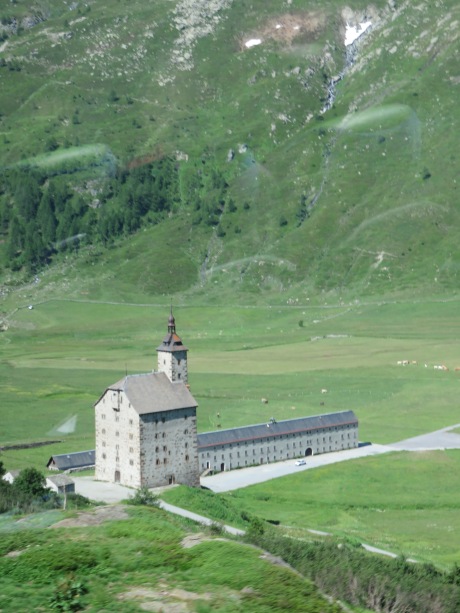

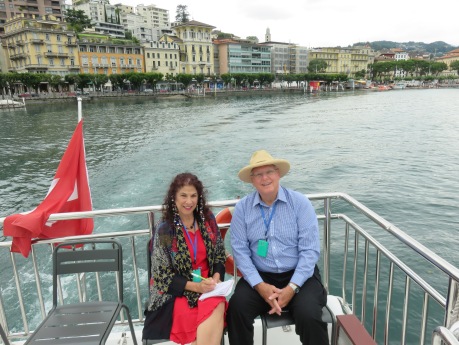
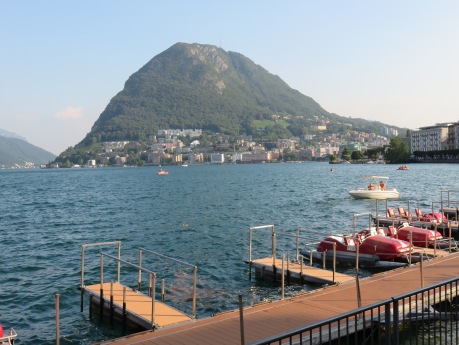
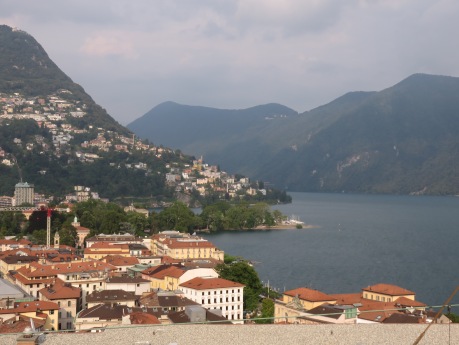
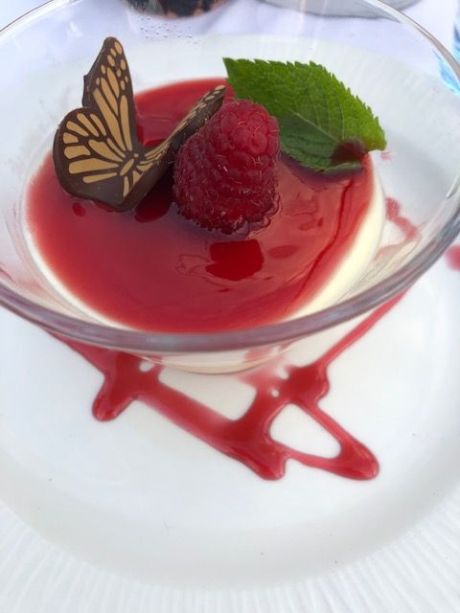

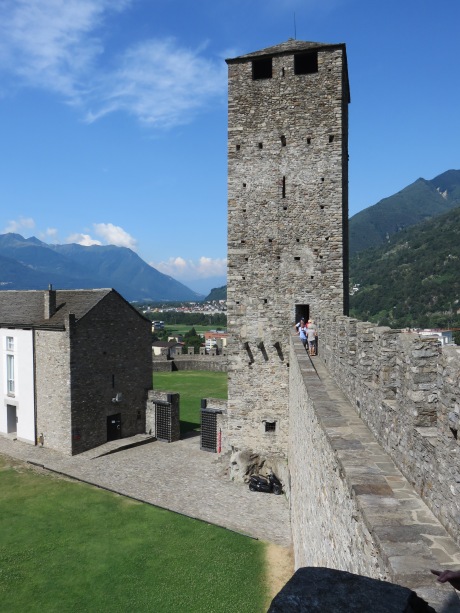
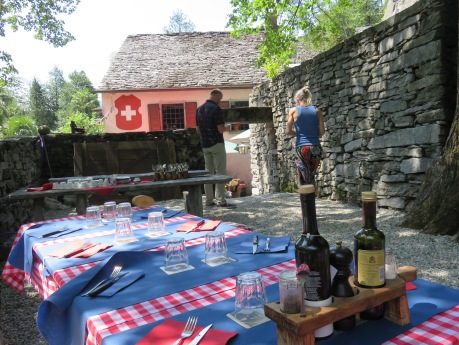
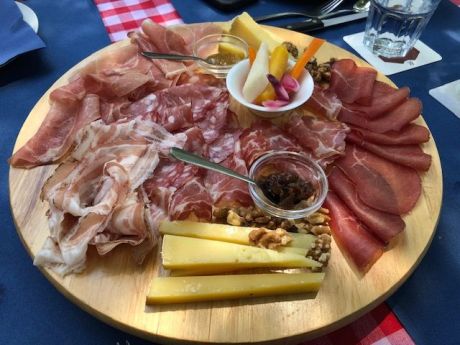
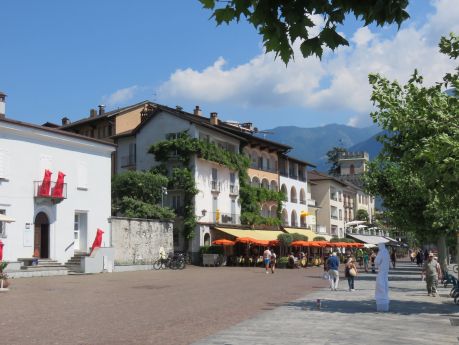
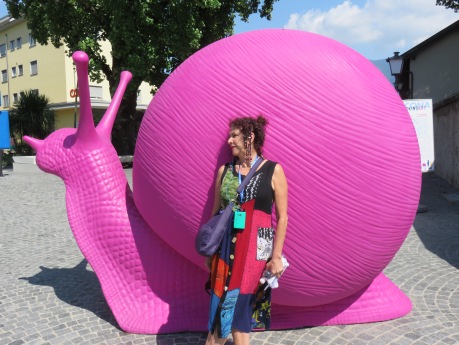

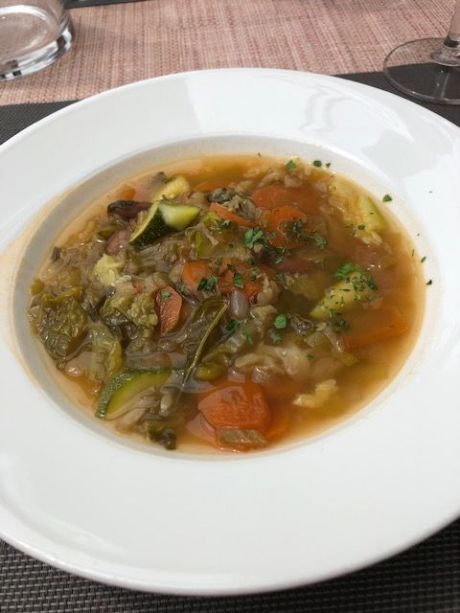

Leave a Reply
Want to join the discussion?Feel free to contribute!